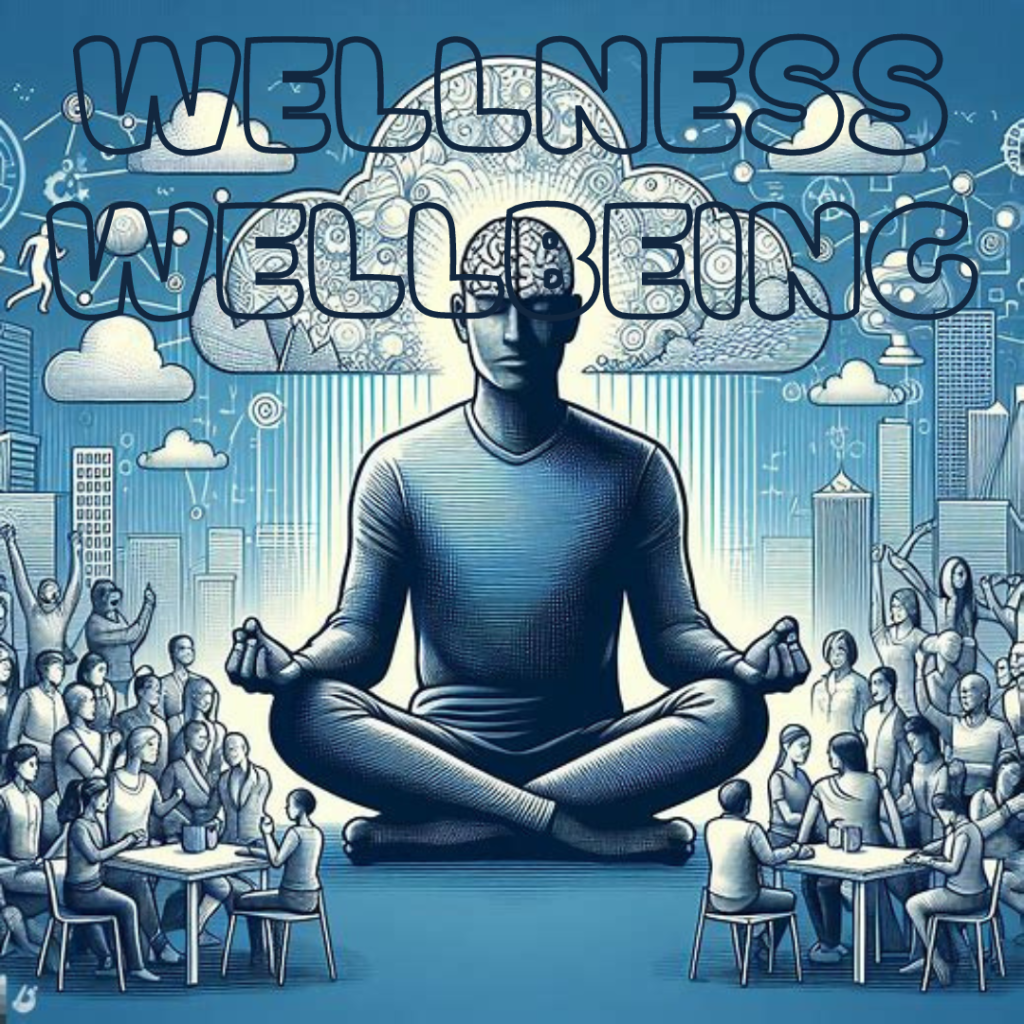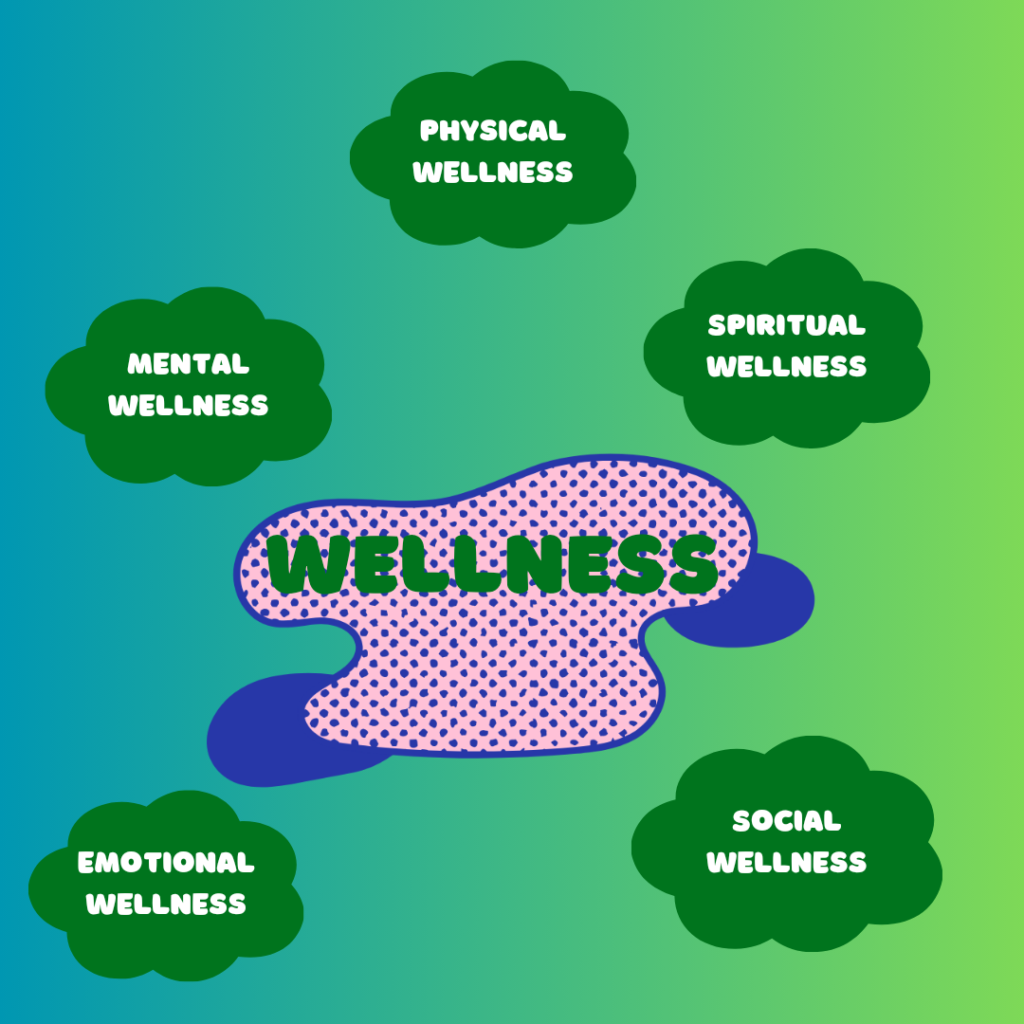Unveiling the Tapestry of Wellness and Wellbeing

In the hustle and bustle of our modern lives, the terms “wellness” and “wellbeing” are often used interchangeably, but are they truly synonymous? As we embark on a journey to unravel the intricacies of these concepts, it becomes apparent that they represent distinct facets of our overall health and satisfaction. In this exploration, we will delve deep into the realms of wellness and wellbeing, examining their definitions, differences, and the interconnectedness that shapes our pursuit of a more fulfilling life.
Understanding Wellness
Wellness, at its core, encompasses the active pursuit of activities, choices, and lifestyles that lead to a state of holistic health. It goes beyond the absence of illness and involves conscious efforts to achieve a balance in various dimensions of one’s life. The dimensions of wellness often include physical, mental, emotional, social, and even spiritual aspects.

- Physical Wellness:
Physical wellness involves maintaining a healthy body through regular exercise, proper nutrition, and adequate rest. It is the foundation upon which other dimensions of wellness are built. Engaging in physical activities not only enhances cardiovascular health but also contributes to better mood and overall vitality.
- Mental Wellness:
Mental wellness is about cultivating a positive mindset, managing stress, and fostering intellectual curiosity. Practices like mindfulness and meditation play a crucial role in promoting mental clarity and emotional resilience. Acknowledging and addressing mental health concerns is an integral part of achieving overall wellness.
- Emotional Wellness:
Emotional wellness centers around understanding and managing one’s emotions effectively. It involves developing healthy coping mechanisms, nurturing positive relationships, and fostering a sense of self-awareness. Emotional intelligence is key to navigating the complexities of human interactions and maintaining emotional balance.
- Social Wellness:
Social wellness emphasizes the importance of building and maintaining meaningful connections with others. Strong social bonds contribute to a sense of belonging, support systems, and an enriched quality of life. Engaging in social activities and fostering a sense of community are vital components of social wellness.
- Spiritual Wellness:
Spiritual wellness goes beyond religious affiliations and involves finding purpose and meaning in life. It encompasses a connection to something greater than oneself, whether it be through nature, philosophy, or personal beliefs. Cultivating a sense of purpose can enhance overall life satisfaction and contribute to spiritual wellness.
Understanding Wellbeing
Wellbeing, on the other hand, is a broader and more subjective term that encompasses the overall quality of one’s life. It encompasses the sense of contentment, fulfillment, and happiness that an individual experiences across various aspects of their life.

- Physical Wellbeing:
Similar to physical wellness, physical wellbeing reflects the state of one’s body. However, it extends beyond health and fitness to include the overall comfort and satisfaction with one’s physical state. This may involve aspects like body image, self-care, and the ability to engage in activities without limitations.
- Psychological Wellbeing:
Psychological wellbeing delves into the mental and emotional aspects of one’s life. It encompasses feelings of happiness, fulfillment, and satisfaction. A person with high psychological wellbeing is more likely to navigate challenges effectively, experience positive emotions, and maintain a healthy mental state.
- Social Wellbeing:
Social wellbeing aligns with the social dimension of wellness, emphasizing the importance of relationships and community connections. A person with strong social wellbeing enjoys positive social interactions, a sense of belonging, and supportive relationships that contribute to their overall satisfaction with life.
- Environmental Wellbeing:
Environmental wellbeing acknowledges the impact of the external environment on an individual’s life satisfaction. This includes the quality of the physical environment, access to resources, and the ability to live in a way that aligns with one’s values and principles.
- Economic Wellbeing:
Economic wellbeing involves financial stability and the ability to meet basic needs. While not the sole determinant of overall wellbeing, economic factors play a significant role in influencing an individual’s sense of security, freedom, and access to opportunities.
The Interconnectedness of Wellness and Wellbeing
As we dissect the nuances of wellness and wellbeing, it becomes evident that these concepts are intricately connected. Wellness serves as the foundation, providing the building blocks for an individual’s overall wellbeing. For instance, maintaining physical wellness through exercise and proper nutrition contributes to physical wellbeing, fostering a positive body image and overall satisfaction with one’s physical state.
Likewise, mental wellness is a key contributor to psychological wellbeing. Engaging in activities that promote mental clarity, stress management, and emotional resilience directly impacts an individual’s overall happiness and fulfillment. The interplay between these dimensions creates a dynamic tapestry that defines our holistic health and wellbeing.
Strategies for Cultivating Wellness and Enhancing Wellbeing
Now that we’ve explored the distinctions and connections between wellness and wellbeing, let’s delve into practical strategies to cultivate both and pave the way for a more fulfilling life.
- Holistic Lifestyle Choices:
Adopting a holistic approach to lifestyle choices is fundamental to achieving wellness and enhancing overall wellbeing. This includes making conscious decisions regarding nutrition, exercise, sleep, and stress management. By prioritizing self-care and embracing a balanced lifestyle, individuals can lay the groundwork for optimal physical, mental, and emotional health.
- Mindfulness and Self-Awareness:
Incorporating mindfulness practices into daily life fosters self-awareness and contributes to mental and emotional wellness. Techniques such as meditation, deep breathing, and mindful living help individuals stay present, manage stress, and cultivate a positive mindset. The ability to understand and regulate one’s emotions is a powerful tool for promoting overall wellbeing.
- Building Strong Social Connections:
Nurturing meaningful relationships and building a supportive social network are essential for both social wellness and social wellbeing. Engaging in social activities, maintaining open communication, and investing time in cultivating connections contribute to a sense of belonging and fulfillment. Shared experiences and positive interactions enhance the fabric of social wellbeing.
- Pursuing Personal Growth and Development:
Embracing opportunities for personal growth and development is a key component of overall wellbeing. This may involve setting and pursuing goals, acquiring new skills, and continually challenging oneself. A commitment to lifelong learning and personal evolution contributes to a sense of purpose and fulfillment.
- Environmental Consciousness:
Recognizing the impact of the external environment on wellbeing underscores the importance of environmental consciousness. This includes sustainable living practices, connecting with nature, and creating a living space that aligns with personal values. A harmonious relationship with the environment contributes to a sense of balance and overall wellbeing.
- Financial Planning and Security:
While economic wellbeing is just one dimension of overall wellbeing, it plays a significant role in providing stability and freedom. Developing financial literacy, setting realistic financial goals, and creating a budget contribute to economic wellness. Striking a balance between financial responsibility and enjoying life’s experiences enhances overall wellbeing.
- Cultivating Spiritual Connection:
For those who resonate with spiritual wellness, cultivating a sense of connection to something greater than oneself is paramount. This may involve engaging in spiritual practices, exploring personal beliefs, or connecting with a community that shares similar values. Cultivating spiritual wellness contributes to a deeper sense of meaning and purpose in life.
Conclusion
In the intricate dance between wellness and wellbeing, we discover that they are not mutually exclusive but rather intertwined aspects of our journey toward a more fulfilling life. Wellness serves as the vehicle that propels us forward, addressing the specific dimensions of our health and vitality. Wellbeing, in turn, reflects the tapestry woven by the sum of these dimensions, encompassing our overall satisfaction, contentment, and happiness.
As we navigate the complexities of modern existence, let us not view wellness and wellbeing as distant destinations but as ongoing processes of self-discovery and growth. By embracing a holistic approach to our choices, relationships, and lifestyle, we can cultivate a life that resonates with both wellness and wellbeing, ultimately leading to a richer and more meaningful existence. The journey may be challenging, but the rewards are boundless—a life well-lived, grounded in health, purpose, and fulfillment.
Disclaimer
This blog post is for informational purposes only. It does not substitute professional advice, diagnosis, or treatment. Consult with a qualified healthcare or mental health professional for personalized guidance.
Don’t miss out – subscribe now for the latest updates and insights!
Discover more from HUMANITYUAPD
Subscribe to get the latest posts sent to your email.

